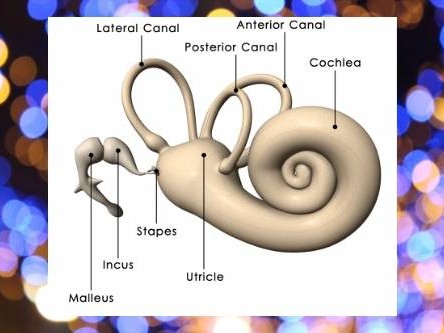
Our Balance System
To begin a discussion around balance disorders it is helpful to have some understanding of how or balance organ works.
The organs responsible for balance are
- Three Semicircular canals in each ear
- Two Otolith organs known as the Utricle and Saccule also in each ear.
Anatomically the balance organ is next to the hearing organ and they both share fluids, so a problem in one area can also affect the other.
The three semicircular canals measure rotation of the head and the two otolith organs respond to vertical and horizontal motion. We are fortunate that nature gave us a duplicate balance organ that provides a back-up system should one side have a failure. The back-up system does not “kick in” immediately and that is why feelings of vertigo and nausea can take a number of days to diminish. This back up re-booting of the balance system is known as central compensation. Sometimes the back-up system does not fully compensate and work is needed to help it along.
The balance system requires assistance from our eyes and joint sensors to build a complete picture of where we are in space. The brainstem, cerebellum and cortex also play an important role in reflex speed, accuracy of motion and integration of information respectively.
Defects in one or more of these motion sensors lead to most Balance Disorders. The role of the audiologist and medical specialist is to determine which component is causing the problem and what can be done to improve the situation for the individual.
Our next section will outline a number of common balance disorders for you to review. The symptoms of the discrete balance disorders can overlap and skill is necessary to delineate one from the other. ACE Audiology Melbourne would be delighted to assist you in your endeavours to resolve any balance issue you may be experiencing.
